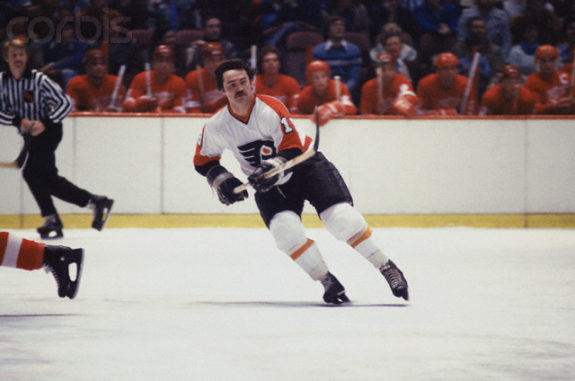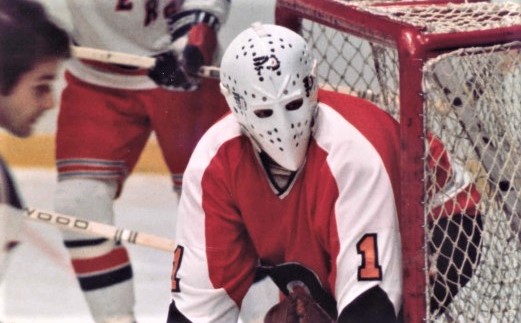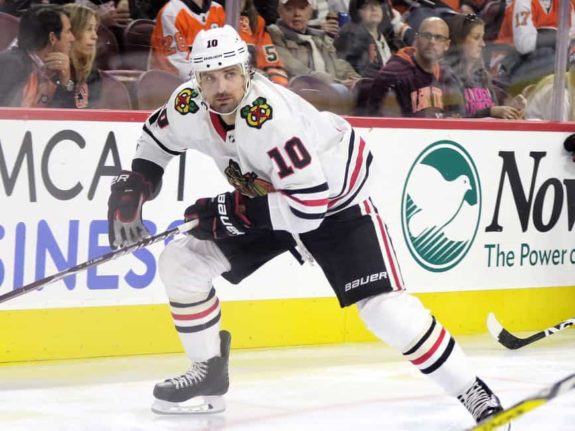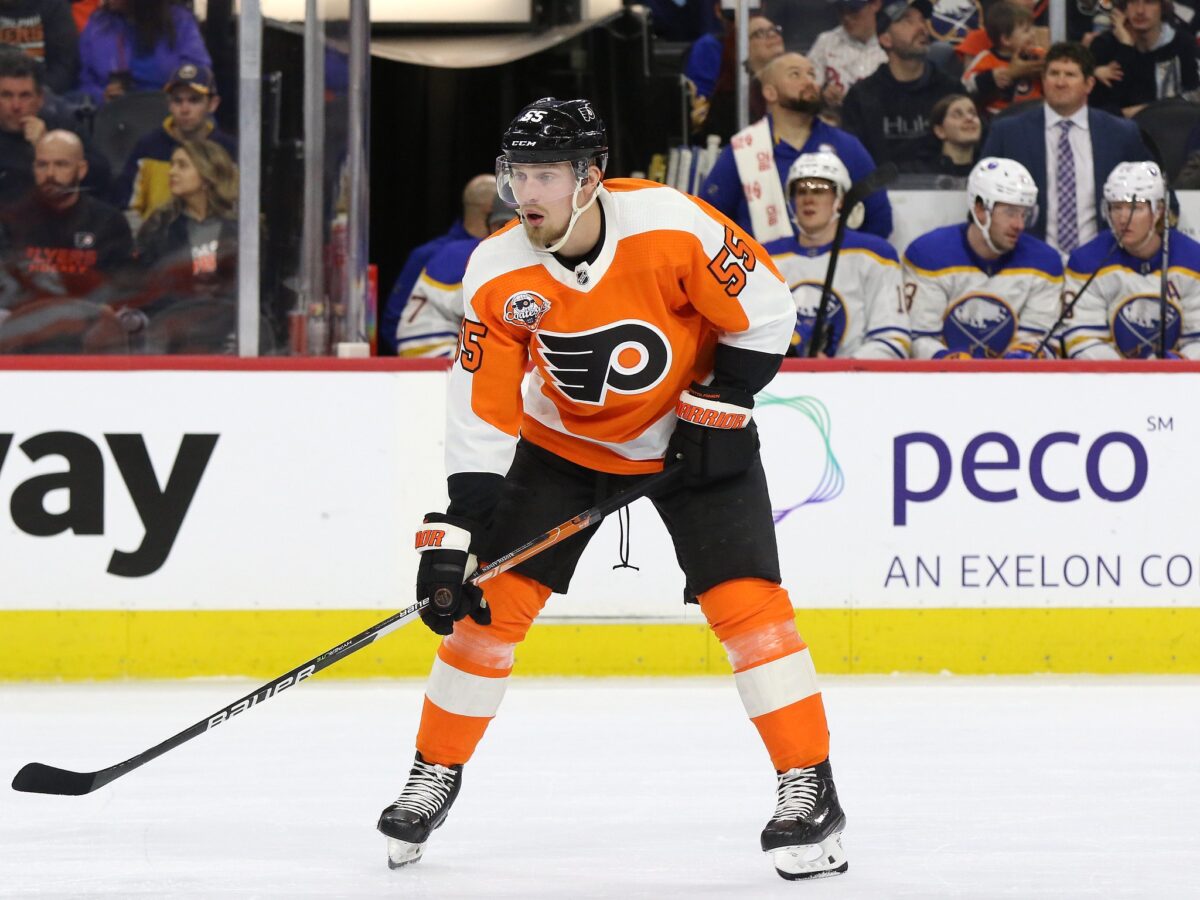In the history of the Philadelphia Flyers, there have been a total of nine general managers (GMs) to ever hold the position. Many of the moves that these GMs made were great, but there were some inevitable misses in the process. What is the biggest mistake that each GM made for the Flyers in their history?
Bud Poile — Giving Up the Pick for Rick
The Flyers’ first GM, Bud Poile, had very few moves significant enough to choose from. One in particular stands out above the rest, where he traded away a draft pick that would become a key player in the NHL.
On Oct. 18, 1967, Poile traded a 1970 first-round pick to the Boston Bruins for center Rosaire Paiement. He only scored nine points for Philadelphia, while the draft pick became forward Rick MacLeish.

The unique part about this trade is that the Flyers were actually able to repent for their mistake and trade for him back. He never played for the Bruins, but spent 12 seasons with the Orange and Black. He scored 697 points in 741 career games with the Flyers and won two Stanley Cups as well. In the end, Boston was the team who made the biggest mistake, passing on the elite centerman.
Keith Allen — An Ap-parent Mistake
Keith Allen might be one of the best GMs in NHL history, in part due to his formation of the ‘Broad Street Bullies’, and appearing in the playoffs in his last 11 seasons as GM of the team. Though he is in the Hockey Hall of Fame as a builder, there is one hole on his resume that could have resulted in disaster.
On Jan. 31, 1971, Allen dealt goaltender Bernie Parent to the Toronto Maple Leafs along with a 1971 second-round pick in exchange for netminder Bruce Gamble, center Mike Walton, and a 1971 first-round pick. What’s more is that the second-round pick Toronto received was used to take Rick Kehoe, a great player for the Flyers’ rival Pittsburgh Penguins for many years.

Parent went on to win two Vezina Trophies and two Conn Smythe Trophies in his career. This would seem like a massive failure on Allen’s part, but he actually obtained the goaltender back only a couple years later. The Hall of Fame netminder was a key part of both of the Flyers’ Stanley Cup championships despite being traded by the team. Ironically, one of the players the Flyers received in the trade, Walton, was the sole piece that returned to the Bruins to get MacLeish back. In the end, this whole sequence worked out beautifully. On paper, it is still a bad deal with the benefit of hindsight.
Bob McCammon — A MacLeishé Sentiment
Admittedly, Bob McCammon’s time as Flyers’ GM was so short-lived that it was difficult to find a trade of his that did not age well. The worst of his seven deals includes one that sent MacLeish to the Detroit Red Wings for absolutely nothing in return on Jan. 8, 1984.
MacLeish wasn’t exactly done with his NHL career at that point, but he did not play again after the 1983-84 season. With Detroit, he scored 10 points in 25 games. This is still decent production, so perhaps the Flyers could have gotten something back in return other than future considerations.
The reasoning behind the deal was that, in his own words, “The development of our young players and top minor-league prospects made it possible for us to trade Rick to Detroit” (from ‘MacLeish Traded To Red Wings,’ New York Times, Jan. 9, 1984). What made the Flyers great at the time was their youth, proven by two of their top three scorers being under the age of 26. However, the sentiment of getting younger is better is a bit cliché, as the veteran was good in his own right, scoring 22 points in 29 games. Over a full season, this would have been good enough to place him fifth on the team in points. It’s a bit of a reach, but perhaps this deal wasn’t the best.
Russ Farwell — A Ricci Price to Pay
Russ Farwell actually had a very good tenure as the Flyers’ GM. He earned the right to make a big splash, as he never really had in the past. This came with the notorious Eric Lindros trade that remains one of the most notable in league history.

On June 30, 1992, the Flyers traded a huge package to the Quebec Nordiques (relocated to Colorado to become the Avalanche) to acquire Lindros, giving up Peter Forsberg, Steve Duchesne, Mike Ricci, Kerry Huffman, Ron Hextall, two first-round draft picks, and $15 million in cash. The Flyers gave up a hefty price in order to get their superstar.
The only two players in this deal truly worth mentioning, Forsberg and Lindros, have nearly identical careers, both having a single Hart Trophy to their name but unfortunately having short careers due to injuries. It could be argued that with the Avalanche teams of the ’90s and ’00s, the Flyers’ star could have won multiple Stanley Cup championships to match the former Nordique.
Lindros was consistently the best player on the Flyers, while this was only the case for Forsberg on a few occasions, as he had Joe Sakic and Patrick Roy by his side. The similarities of these two players are the main issue here, as the Flyers gave up a haul just to slightly improve their player, at best. Lindros was a very exciting player for the Flyers, but overall, this trade should go down as a loss for the team. It had its benefits, but the Flyers created a borderline dynasty with this move, but not for their team.
Bob Clarke — A Not So Sharp Deal
It is undeniable that Bobby Clark was one of the best Flyers in history. On two separate occasions, he served as the GM of the team for almost three decades cumulatively. He was bound to have some duds, and he did when he parted ways with forward Patrick Sharp.

After 66 games in the NHL with just 10 goals and five assists, he was traded along with Eric Meloche to the Chicago Blackhawks in exchange for forward Matt Ellison and a third-round pick on Dec. 5, 2005. Winning three Stanley Cups in Chicago including one against the Flyers, this was definitely one that Clarke would like to have back.
In 749 games with the Blackhawks, Sharp had 249 goals and 283 assists for 532 points. He was never quite the best player on any of his teams, but he was still a vital piece to Chicago’s success. Without him, there is a world where the Flyers win the Stanley Cup in 2009-10.
Paul Holmgren — The MacDonald Chronicles
Essentially everything about Andrew MacDonald’s time in Philadelphia went awry. Everything including what the team gave up to get him, the extension he received, and his subsequent buyout all made the transaction to acquire him a disaster.

Before the 2014 Playoffs, Paul Holmgren made one of his last trades as the GM of the Flyers. On March 4, 2014, he traded for MacDonald, giving up Matt Mangene, a 2014 third-round pick, and a 2015 second-round pick to the New York Islanders to get him. This deal seems innocent enough, but the defenseman became one of the more berated members of the Flyers for several years.
MacDonald might have gotten more flack than he otherwise would have had he not been signed to a six-year, $30 million extension by Holmgren shortly after making the trade. The Flyers’ defense, especially in the 2010s, was not very good. He didn’t necessarily help matters, as he never truly lived up to what he was being paid. As such, he was bought out on June 15, 2019, officially ending his time in Philadelphia.
The real mishap comes with what the Flyers gave up. The 2014 draft pick became goaltender Ilya Sorokin, who was one of the best goaltenders in 2022-23. The 2015 draft pick was not used by the Islanders, but it still became Brandon Carlo, who is arguably better than any defenseman that the Flyers currently have on their roster. If they could, the Flyers would probably take this deal back.
Ron Hextall — Hartnell Down
From the get-go, there was really no need for this trade. In Hextall’s first move as the GM of the Flyers, he sent one of the most beloved players in team history to the Columbus Blue Jackets.
On June 23, 2014, Hartnell was dealt to Columbus in exchange for forward R.J. Umberger and a 2015 fourth-round draft pick. It is important to note that this was not a salary dump, as the former fan-favorite had a cap hit of $4.75 million for the next five years, while the player they received had a $4.6 million cap hit for the next three years.
In Umberger’s return to Philadelphia, he had a combined 11 goals and 15 assists for 26 points in 106 games. This led to a buyout of his contract, cementing the deal as a failure for the Flyers. As for Hartnell, he had immediate success with Columbus, with 28 goals in his first season there. In total, he had 64 goals and 82 assists for 146 points in 234 games with the Blue Jackets. Plain and simple, the Flyers lost this one.
Chuck Fletcher — A Risto-rical Blunder
Much like the Hartnell trade, this deal was criticized from the very beginning. The Flyers were certainly in the market for a right-handed defenseman at the time after losing Matt Niskanen the year prior, but this didn’t help matters at all. GM Chuck Fletcher felt as though Rasmus Ristolainen could fix the team’s issues.

On July 23, 2021, the Flyers sent defenseman Robert Hagg, a 2021 first-round pick, and a 2023 second-round pick to the Buffalo Sabres to acquire Ristolainen. A physical defenseman coming off of a down year, Philadelphia was betting on a magical transition into an elite defenseman. Unfortunately, this has not happened yet.
This trade probably contributed to Fletcher being fired from the GM position, and the fact that he doubled down on the deal by signing him to a five-year extension certainly didn’t help. Ristolainen is still working to change the narrative around his name, but he might not ever live up to the contract he received.
Danny Briere — A Hayes-ty Trade
Finally, we get to the Flyers’ current GM in Danny Briere. He hasn’t held the job for very long, so it was difficult to find a trade that was a miss. However, the one that sent forward Kevin Hayes to the St. Louis Blues fits the criterion the best.
On June 27, 2023, Hayes was traded to the Blues for a sixth-round pick. Briere had to eat half of his $7.14 million salary to make the deal work, still with three years left on it. While it also saved space, it seems as though Philadelphia made this deal out of necessity rather than for the value they got back.
Related: Flyers’ John Tortorella Holds Unique Position of Power
That was essentially the case, as Briere had his hands tied with this one. It was clear that Hayes and head coach John Tortorella did not have the greatest relationship, and that it would be best if they were split up. As a result, the Flyers had to take the biggest hit in order to make this happen.
Each GM of the Flyers has had their fair share of misfortune. The longer one stays with a team, the more prone they are to making a bad decision. Even the best of the best are not safe from this.
